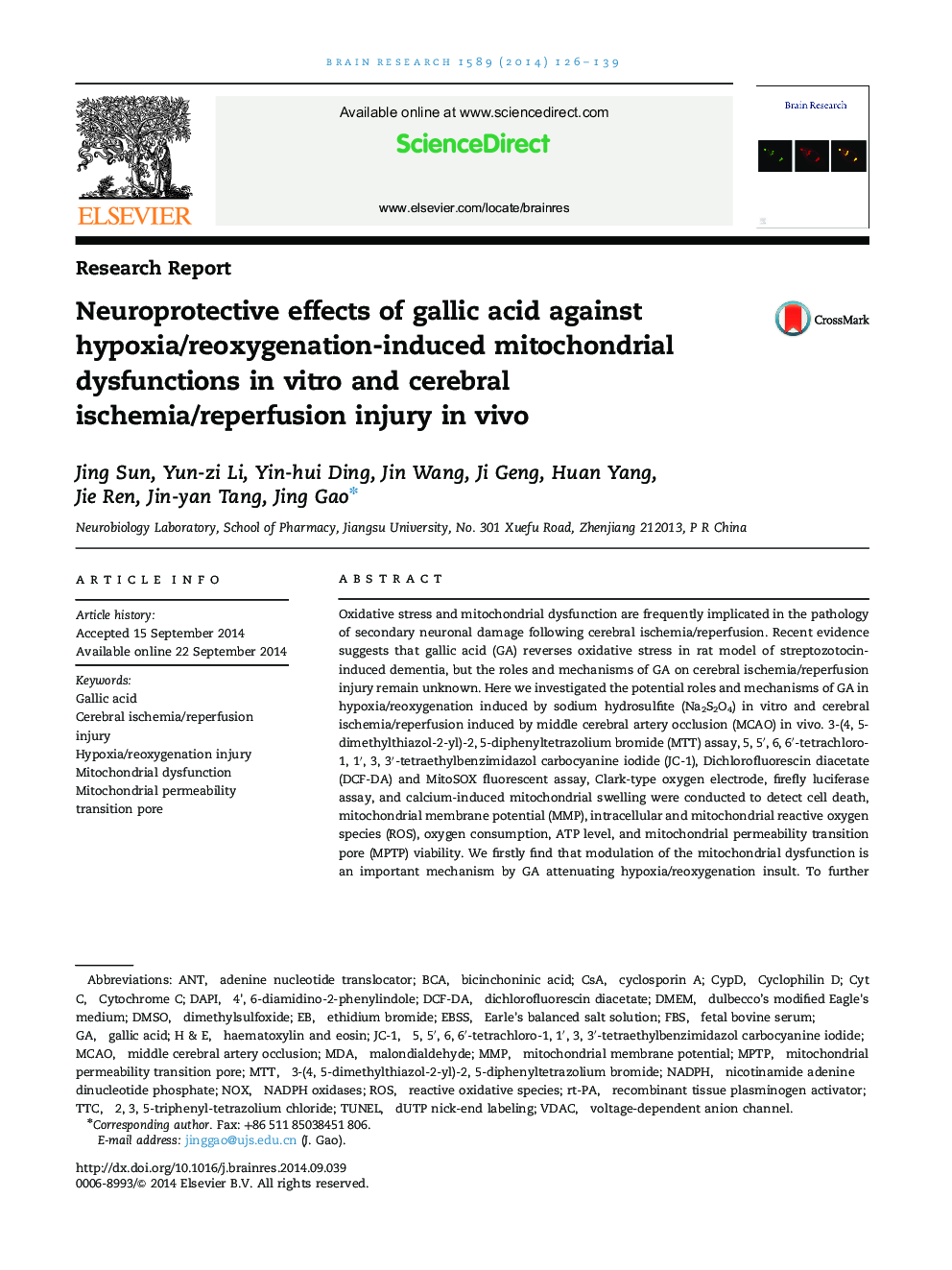| Article ID | Journal | Published Year | Pages | File Type |
|---|---|---|---|---|
| 4324062 | Brain Research | 2014 | 14 Pages |
•GA reverses hypoxia/reoxygenation injury partially via inhibiting oxidative stress.•GA inhibits oxidative stress partially via regulation of mitochondrial ROS.•GA exerts antioxidative activity partially by modulating mitochondrial dysfunction.•MPTP is one of the key targets of GA regulation of mitochondrial dysfunction.•GA is a potential protective agent against cerebral ischemia/reperfusion injury.
Oxidative stress and mitochondrial dysfunction are frequently implicated in the pathology of secondary neuronal damage following cerebral ischemia/reperfusion. Recent evidence suggests that gallic acid (GA) reverses oxidative stress in rat model of streptozotocin-induced dementia, but the roles and mechanisms of GA on cerebral ischemia/reperfusion injury remain unknown. Here we investigated the potential roles and mechanisms of GA in hypoxia/reoxygenation induced by sodium hydrosulfite (Na2S2O4) in vitro and cerebral ischemia/reperfusion induced by middle cerebral artery occlusion (MCAO) in vivo. 3-(4, 5-dimethylthiazol-2-yl)-2, 5-diphenyltetrazolium bromide (MTT) assay, 5, 5′, 6, 6′-tetrachloro-1, 1′, 3, 3′-tetraethylbenzimidazol carbocyanine iodide (JC-1), Dichlorofluorescin diacetate (DCF-DA) and MitoSOX fluorescent assay, Clark-type oxygen electrode, firefly luciferase assay, and calcium-induced mitochondrial swelling were conducted to detect cell death, mitochondrial membrane potential (MMP), intracellular and mitochondrial reactive oxygen species (ROS), oxygen consumption, ATP level, and mitochondrial permeability transition pore (MPTP) viability. We firstly find that modulation of the mitochondrial dysfunction is an important mechanism by GA attenuating hypoxia/reoxygenation insult. To further assess the effects of GA on cerebral ischemia/reperfusion injury, 2, 3, 5-triphenyl-tetrazolium chloride (TTC) staining, dUTP nick-end labeling (TUNEL) assay, and Cytochrome C (Cyt C) release were performed in MCAO rats. The results support that GA is useful against cerebral ischemia/reperfusion injury as a potential protective agent.
